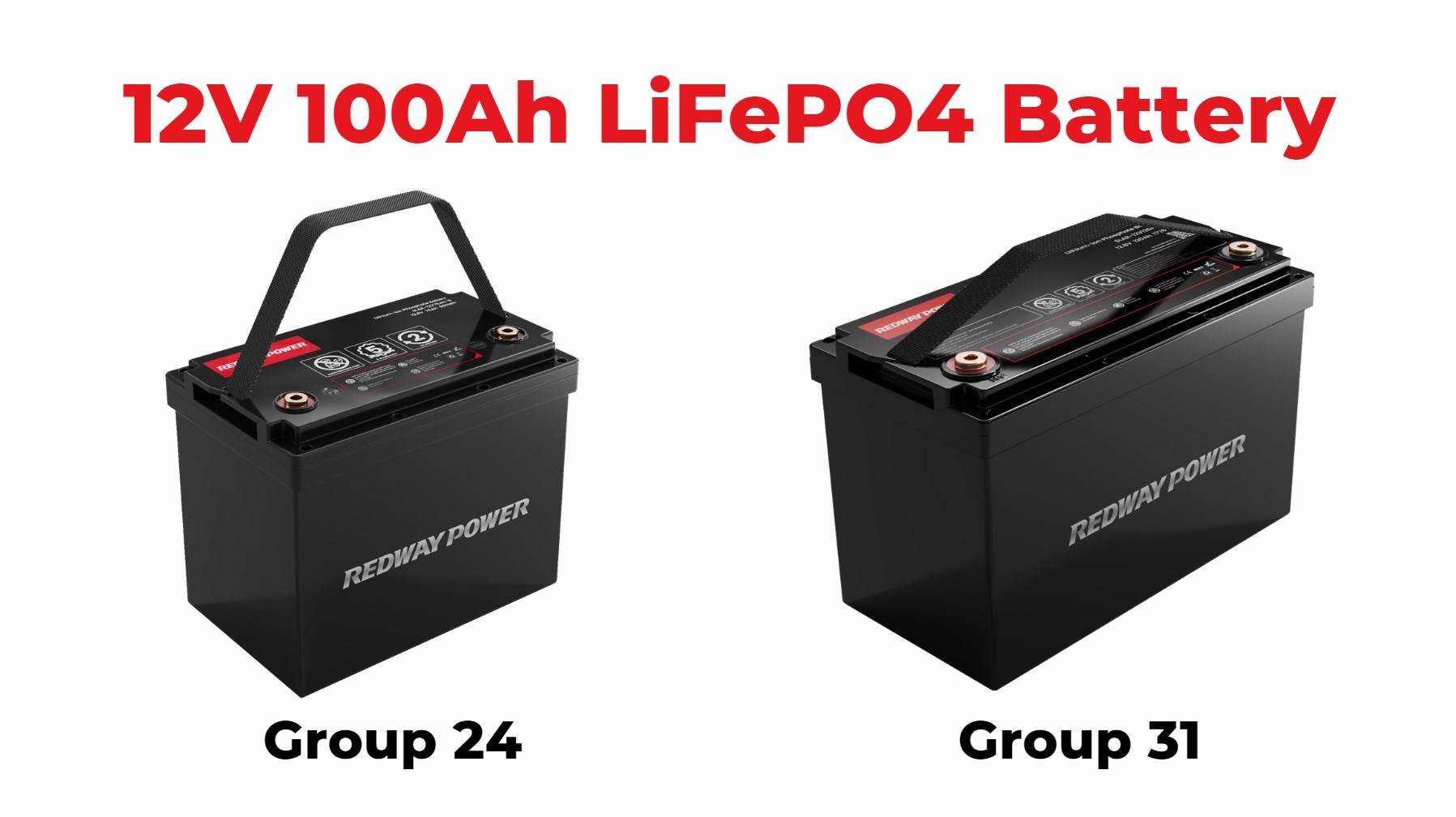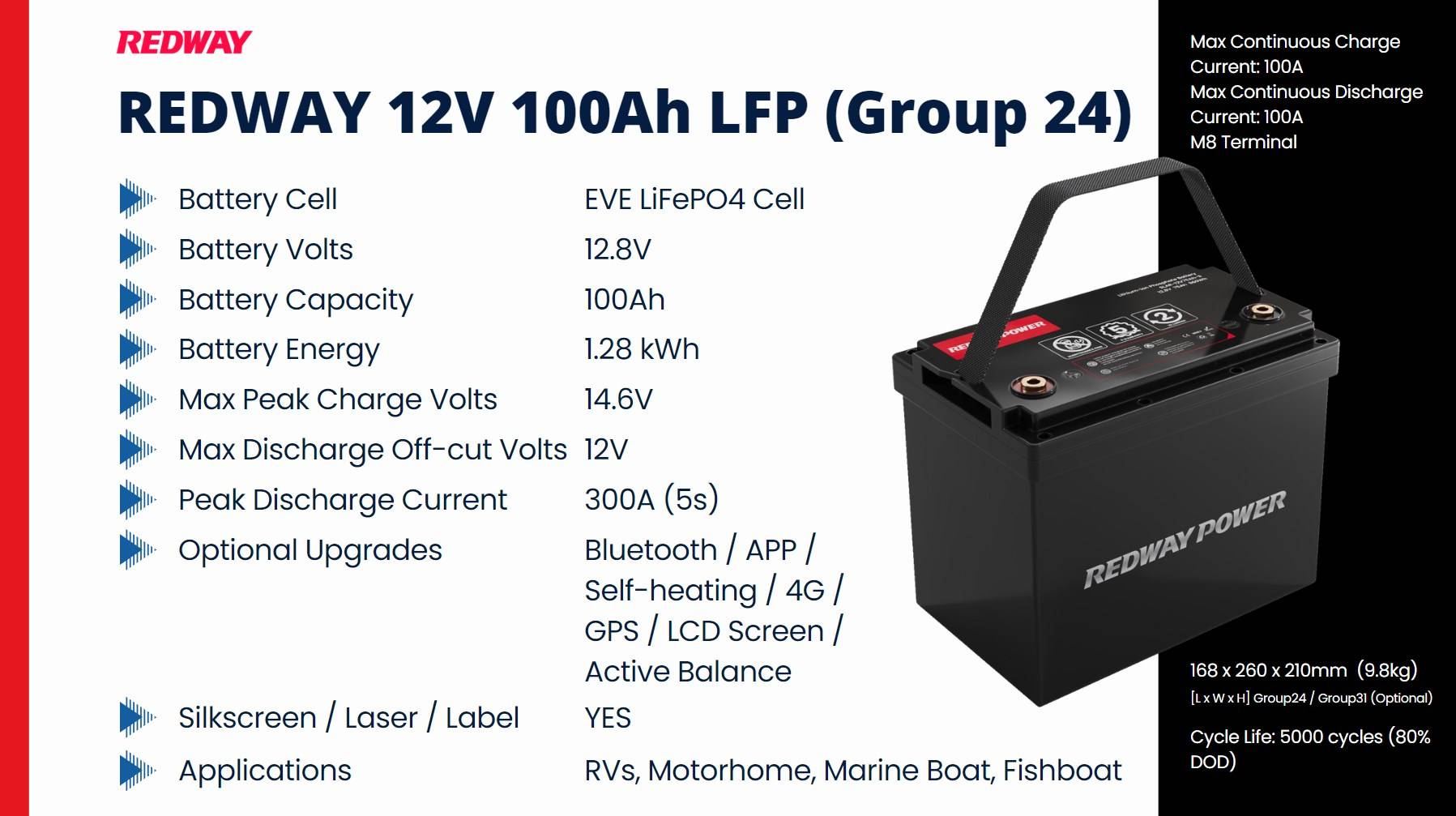- Rack-mounted Lithium Battery
- Golf Cart Lithium Battery
-
Golf Cart Lithium Battery
- 36V 50Ah (for Golf Carts)
- 36V 80Ah (for Golf Carts)
- 36V 100Ah (for Golf Carts)
- 48V 50Ah (for Golf Carts)
- 48V 100Ah (Discharge 100A for Golf Carts)
- 48V 100Ah (Discharge 150A for Golf Carts)
- 48V 100Ah (Discharge 200A for Golf Carts)
- 48V 120Ah (for Golf Carts)
- 48V 150Ah (for Golf Carts)
- 48V 160Ah (Discharge 100A for Golf Carts)
- 48V 160Ah (Discharge 160A for Golf Carts)
-
Golf Cart Lithium Battery
- Forklift Lithium Battery
- 12V Lithium Battery
- 24V Lithium Battery
- 36V Lithium Battery
- 48V Lithium Battery
-
48V LiFePO4 Battery
- 48V 50Ah
- 48V 50Ah (for Golf Carts)
- 48V 60Ah (8D)
- 48V 100Ah (8D)
- 48V 100Ah
- 48V 100Ah (Discharge 100A for Golf Carts)
- 48V 100Ah (Discharge 150A for Golf Carts)
- 48V 100Ah (Discharge 200A for Golf Carts)
- 48V 150Ah (for Golf Carts)
- 48V 160Ah (Discharge 100A for Golf Carts)
- 48V 160Ah (Discharge 160A for Golf Carts)
-
48V LiFePO4 Battery
- 60V Lithium Battery
-
60V LiFePO4 Battery
- 60V 20Ah
- 60V 30Ah
- 60V 50Ah
- 60V 50Ah (Small Size / Side Terminal)
- 60V 100Ah (for Electric Motocycle, Electric Scooter, LSV, AGV)
- 60V 100Ah (for Forklift, AGV, Electric Scooter, Sweeper)
- 60V 150Ah (E-Motocycle / E-Scooter / E-Tricycle / Tour LSV)
- 60V 200Ah (for Forklift, AGV, Electric Scooter, Sweeper)
-
60V LiFePO4 Battery
- 72V~96V Lithium Battery
- E-Bike Battery
- All-in-One Home-ESS
- Wall-mount Battery ESS
-
Home-ESS Lithium Battery PowerWall
- 24V 100Ah 2.4kWh PW24100-S PowerWall
- 48V 50Ah 2.4kWh PW4850-S PowerWall
- 48V 50Ah 2.56kWh PW5150-S PowerWall
- 48V 100Ah 5.12kWh PW51100-F PowerWall (IP65)
- 48V 100Ah 5.12kWh PW51100-S PowerWall
- 48V 100Ah 5.12kWh PW51100-H PowerWall
- 48V 200Ah 10kWh PW51200-H PowerWall
- 48V 300Ah 15kWh PW51300-H PowerWall
PowerWall 51.2V 100Ah LiFePO4 Lithium Battery
Highly popular in Asia and Eastern Europe.
CE Certification | Home-ESS -
Home-ESS Lithium Battery PowerWall
- Portable Power Stations
Understanding the Power of a 12V 100Ah Battery: Comprehensive Guide

A 12V 100Ah battery has a capacity that can be converted to kilowatts to better understand its power capabilities. To determine this, we use the formula:
Watt-Hours (Wh)=Voltage (V)×Amp-Hours (Ah)
For a 12V 100Ah battery, this equates to:
Watt-Hours (Wh)=12V×100Ah=1200Wh
Since 1 kilowatt-hour (kWh) equals 1000 watt-hours (Wh), the capacity in kilowatts is:
Kilowatts=1200Wh/1000=1.2kW
Thus, a 12V 100Ah battery offers 1.2 kilowatt-hours of energy storage. This measurement is critical for evaluating how long a battery can power various devices and systems.
Solar Panel Requirements for Charging a 12V 100Ah Battery
When planning to charge a 12V 100Ah battery with solar panels, the choice of panel wattage is crucial. To estimate the number of solar panels required, we first need to understand the power needs for a full charge.
A battery with 1200Wh capacity needs to be matched with appropriate solar panel wattage. For efficient charging, consider the following:
- For MPPT Controllers: To charge a 12V 100Ah lithium battery in about 5 peak sun hours, approximately 310 watts of solar panels are needed.
- For PWM Controllers: To achieve the same result, around 380 watts of solar panels are required.
If opting for a 300-watt solar panel, it will adequately cover the requirement with some margin for efficiency losses. Alternatively, using three 100-watt panels can also meet the charging needs.
Charging a 12V 100Ah Battery: Practical Insights
Battery Charging Time and Solar Panel Size
For effective solar charging, it’s essential to match the solar panel size to the battery’s requirements. Charging a 12V 100Ah battery fully from 0% to 100% using a 20-amp charging rate will take approximately 5 hours. This is calculated by:
Charging Time=Battery Capacity/Charging Current=100Ah/20A=5 hours
A solar panel with a capacity of 240 watts would be needed to charge this battery effectively in the same time frame, but for practical applications, using a 300-watt solar panel is recommended.
The Role of Inverters
Inverter selection plays a significant role when using a 12V 100Ah battery. For instance:
- Running a 2000W Inverter: A 12V 100Ah battery can indeed power a 2000-watt inverter, but runtime will be limited. To sustain such an inverter, a battery’s capacity and discharge capability need to be evaluated. The expected runtime would be approximately 2 hours given the battery’s energy storage.
- Running a 1500W Inverter: The same battery can run a 1500-watt inverter for a slightly longer period, providing a balance between power and battery life.
Choosing the Right Solar Charge Controller
Selecting an appropriate solar charge controller is crucial for battery efficiency and longevity. There are two primary types:
- MPPT Controllers: These are more efficient and can maximize the energy harvested from solar panels. For a 12V 100Ah lithium battery, an MPPT controller with around 310 watts of solar panel capacity will offer optimal performance.
- PWM Controllers: Though less efficient, they are generally more cost-effective. For the same battery, a PWM controller with around 380 watts of solar panels will suffice.
Battery and Inverter Compatibility
Powering High-Wattage Devices
When it comes to powering high-wattage devices such as a 2000-watt inverter, a 12V 100Ah battery can be suitable but requires careful management. An effective setup would be:
- Four 100Ah LiFePO4 Batteries: This configuration ensures that a 2000-watt inverter can be supported effectively, providing both the necessary power and extended runtime.
- Two 200Ah LiFePO4 Batteries: For more robust applications, using two 200Ah batteries can also meet the needs of a high-wattage inverter with a higher discharge capacity.
Battery Longevity and Usage
The lifespan and efficiency of a 12V 100Ah battery depend on its usage and maintenance. For instance:
- TV Usage: A 100W TV can run for approximately 12 hours on a fully charged 12V 100Ah battery. This calculation is based on the battery’s total capacity of 1200Wh.
- Regular Maintenance: Regularly checking and maintaining the battery’s charge and discharge cycles ensures optimal performance and longevity.
Conclusion
Understanding the capacity and optimal usage of a 12V 100Ah battery involves knowing its conversion to kilowatt-hours, the solar panel requirements for charging, and the compatibility with inverters. By accurately calculating these parameters and selecting the right components, you can maximize the efficiency and utility of your battery system.
For tailored battery solutions, including advanced lithium batteries and customized setups, Redway Power offers expert advice and high-quality products designed to meet diverse needs. Whether for renewable energy systems, backup power, or electric vehicles, we provide the expertise and resources to ensure exceptional performance and reliability.













